Just How Green is Pro Bike Racing? This Stage Race Found Out
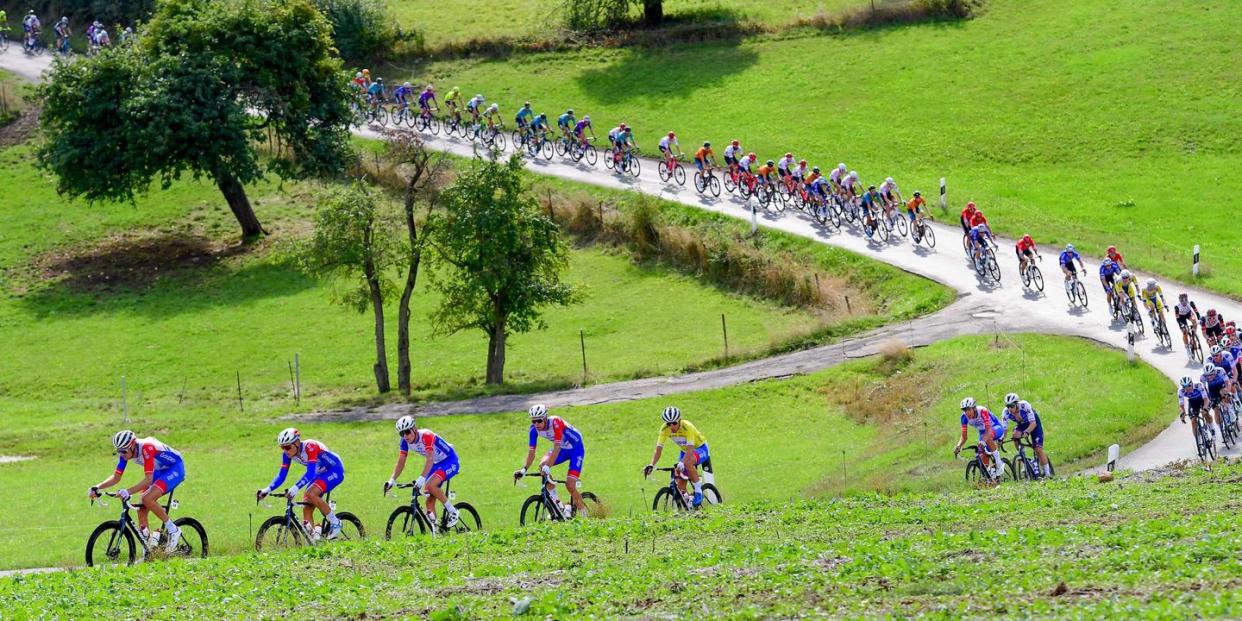
- Oops!Something went wrong.Please try again later.
"Hearst Magazines and Yahoo may earn commission or revenue on some items through the links below."
It’s a little nerve-wracking for an environmentally conscientious race organizer to actually invite in a third party business to calculate the carbon cost of bike racing. But that’s exactly what Andy Schleck, former professional racer and now president of the Škoda Tour Luxembourg, did when he invited nZero to calculate the carbon cost of the five day long stage race.
When the dust cleared and the numbers were tabulated, the total greenhouse gas (GHG) emissions for the five day Tour of Luxembourg was determined to be 91.1 metric tons of carbon dioxide equivalent (MT CO2e), which is equivalent to driving about 226,000 miles in a passenger car, or nine trips around the world.
But what does that really mean?
We think of cycling as a wonderful combatant against global warming, but professional bike racing is far from eco-friendly in its current format. From the travel associated with racing around the globe to the team caravans during a race to spectators flocking to France every July to the basically disposable nature of kit, bikes and bike parts from one season to the next, it’s a hard pill to swallow for the eco-friendly bike race enthusiast.
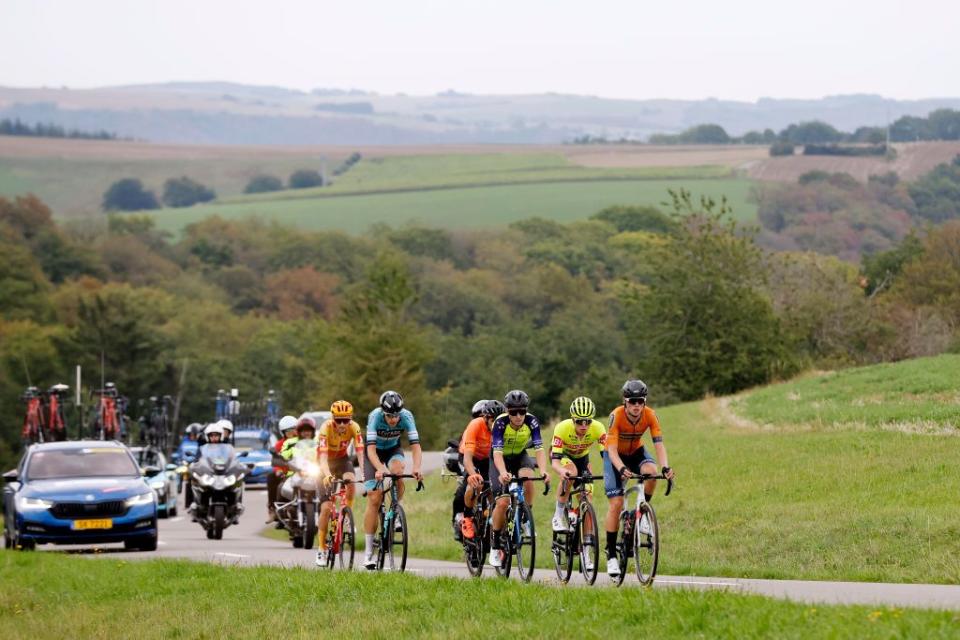
Now, 91.1 tons seems like—let’s be blunt here—a metric shit-ton of carbon dioxide. To contextualize this number a bit, though, the FIFA World Cup in Germany in 2006 generated approximately 250,000 tons of greenhouse gasses, while the 2010 World Cup in South Africa generated 1.65 million tons of CO2e, according to a report in Nature.
Results from the 2022 Tour Luxembourg
And these calculations for the Tour of Luxembourg include emissions from the event itself, all of the teams, and all of the emissions associated with travel to and from the race. Add an Australian to your roster? That’s going to cost you, unless they’re already living in Europe ahead of the race. 32 percent of the emissions from the event were associated with the travel to and from the race, and transportation in general, for organizers, vendors and teams before, during and after the race accounts for 84.5 percent of the total event GHG Emissions.
How did they figure out the carbon cost of the race? Carbon monitoring company nZero gathered data across vendors, bike teams, and others involved in the race. The goal is two-fold: First, get a sense of how much a race ‘costs’ and what’s contributing the most to the carbon footprint, and second, to figure out how to reduce environmental impacts for future races. “Our goal is to help people understand where their environmental footprint is coming from so they can reduce it,” says nZero’s Adam Kramer.
“We’re dealing with the existential threat of climate change, and that is being driven by our environmental impact,” Kramer explains. “That comes from the emissions for the electricity we use to keep the lights on and the computers running to the fuel that’s in our vehicles to the production of our phones and our bicycles themselves. Everything has some environmental impact, some of which can be net positive, most of which is net negative."
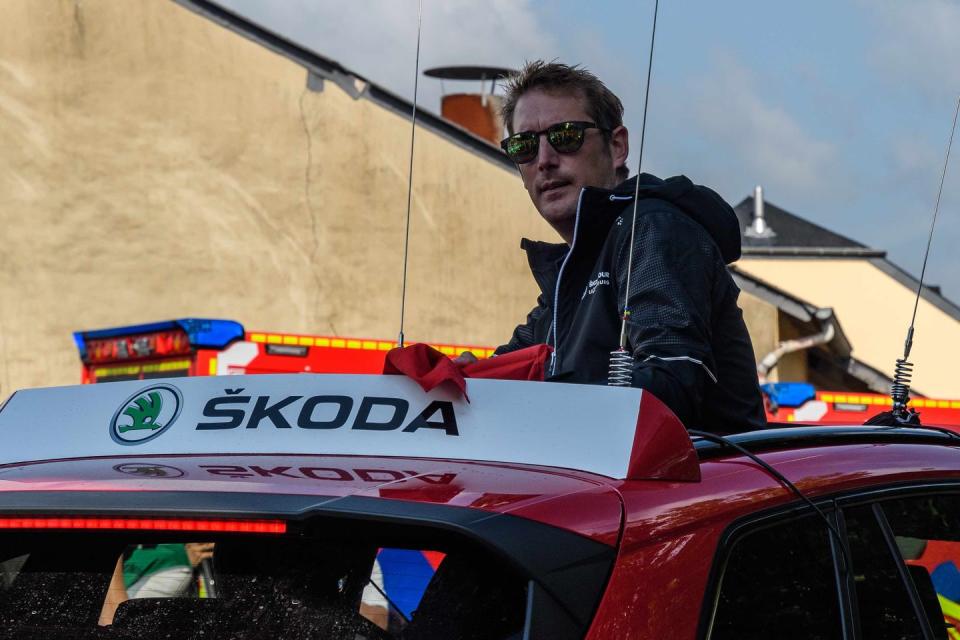
“For the Tour of Luxembourg, partnering with nZero was an obvious way that would let us really see what we’re doing and where we can improve,” Schleck added. “As the race organization, we are proud to show that we can actually measure the carbon emission of the event. nZero can help in providing insight into making decisions in future races to reduce that environmental impact, both supporting the planet and cycling in the process."
How do you measure carbon emissions, really? It’s not a simple process, and nZero isn’t just measuring the amount of trash riders are generating, though that is a factor!
"Given the complexity of where all these emissions are coming from, and how they’re being generated, it is impossible for any one person to be able to track their own carbon footprint, which is why technology like ours has come into play,” Kramer explains. "As a platform, we connect to all of these disparate data sources. With something like the Tour of Luxembourg, we work with the teams to understand travel, equipment, the emissions of the support vehicles and the support team, energy and fuel use while staying at the hotel—it’s an incredibly complex process since there are so many inputs that are measured differently.”
For nZero, though, that was a positive: The complexity of a five-day stage race stretches the limits of their capabilities, and lets them show off the technology. The crew at nZero surveyed teams to get information about their travel plans and vehicle types, they checked the power grid at the race hotels to estimate how much power and water was used on a per-room basis, and they scouted trash cans to see how much riders were tossing. (And yes, teams could arguably ‘trash dope’ by tossing their garbage in outside dumpsters, but Schleck and Kramer say that the teams seemed honest!) Some teams were ahead of the curve: Škoda, for instance, has electric vehicles for race support—though Kramer did tabulate charging times for the cars as well.
You would think that some teams, particularly ones sponsored by big oil or other companies not known for their environmentally-informed principles, would not be particularly excited about these invasive surveys and measurements, but Schleck says he was met with no resistance.
“The teams are aware of the situation we’re living in today with regards to climate change,” he says. “Cycling has developed a lot in the last year in regards to how we approach waste: For example, if a rider throws a bottle or trash on the side of the road outside of the feed zone, they get a penalty. They can even be disqualified. I personally held the team meeting with all the sport directors before the race and said that this is really important for us. In Luxembourg, we want to keep our country clean, and racers and teams are here to support us in order to become more sustainable for the future.”
To make the race to being the greenest team at the Tour interesting, nZero created theHero Team award, won by UCI Pro Team Arkea-Samsic from France. They didn’t have electric cars, but they did use the greenest form of transit possible to get to the race: 61 percent of the team’s travel to and from the event was done by train. This reduced their total emissions by 1.13 tons, compared to the carbon cost of traveling by air.
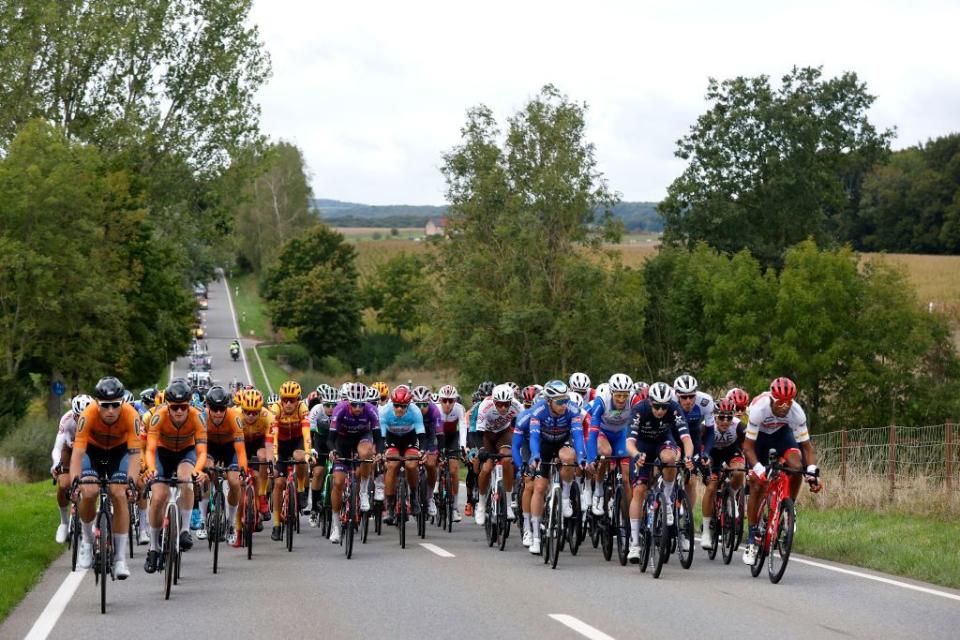
Taking the train was the most green option, and the report from nZero post-race listed swapping fuel-burning cars for biodiesel or electric vehicle fleets would further improve carbon costs of racing.
In the event itself, a major energy suck was the helicopter in the air covering the race. Using drone technology for coverage next year, nZero says, would drop carbon costs by around seven tons—a savings of nearly 10 percent! (It would also save a significant amount of money—something all race organizers can get behind.) Shifting generators to running on biodiesel would save nearly 4 more tons of emissions, another fairly simple swap.
The Tour de Luxembourg has already made strides towards becoming more green with regards to food and in-race waste. 900 bottles were collected in feed zones and properly recycled, and the catering company used regional sustainably sourced ingredients and donated any surplus food. However, nZero noted that swapping beef options for chicken would have dropped total food emissions by a third.
“Our ultimate goal is to help inform decisions going forward on how to continually reduce the impact and how to be better stewards of not just this race in Luxembourg but in any community,” says Kramer. “Other races can see this report and get a sense of their impact, and encourage teams to make responsible choices, like opting for train travel when possible. Instead of flying from Paris to Luxembourg, teams can take the train from Paris to Luxembourg. Not only is that dramatically more environmentally-friendly, it’s a lot cheaper. There’s a cost-savings that comes from these decisions to reduce emissions and waste.”
While electric vehicles have made it easier for teams to reduce their carbon footprints, the ‘fast fashion’ nature of pro cycling—replacing team kits and bikes multiple times per season, going through multiple tires every race, single-serve gels—isn’t eco-friendly by nature. But Schleck does think it’s been slowly improving in recent years. Athletes and race organizers are starting to realize that traveling between continents multiple times a year isn’t good for the body, the wallet, or the planet, so they’re hunkering down in Europe, Australia, or the U.S. for longer chunks of time. Some teams are even becoming more conscientious of food waste and eschewing single-serve gels for cotton-wrapped snacks, Schleck added.
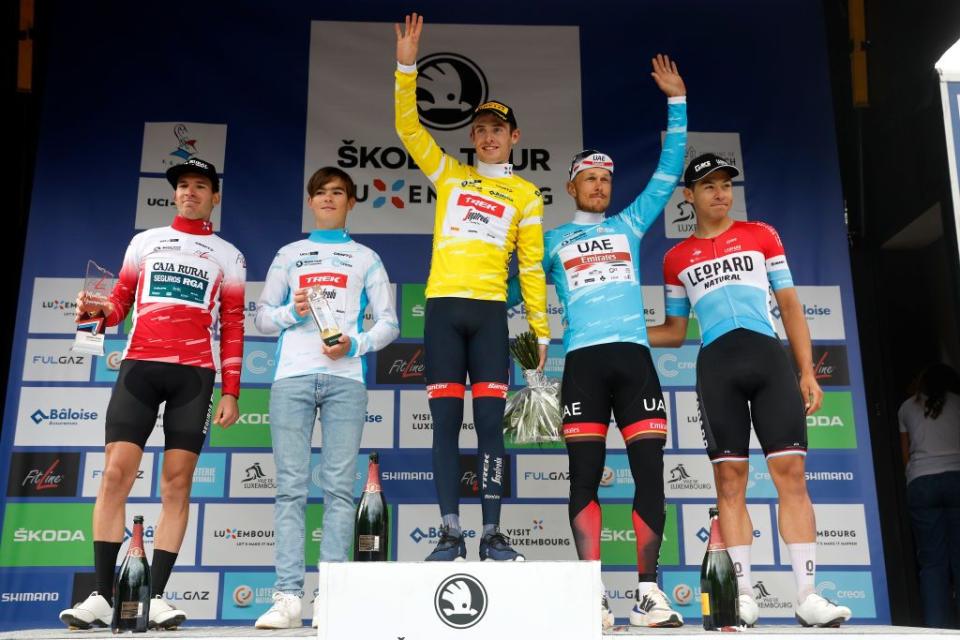
“Cycling is inherently a green sport,” says Schleck. “At the Tour and at my shop, we financially support staff who commute by bike. And personally, I try to walk or ride with my kids to school. I drive an electric vehicle. It’s small steps, but we’re continuing to make them.”
Being the first race to show the carbon cost of bike racing is a scary spot to be: “It is a big deal to be public about this, but I think it goes back to looking at the most avid cycling enthusiasts: They care about the environment,” says Kramer. So this is the right thing to do, and by owning it, by making the results public, this is a chance to show the journey they’re on as a race, and to create that opportunity for further and deeper engagement from the broader cycling community as well."
Sure, the transparency is impressive, but it also puts a target on Schleck’s race. But he’s not nervous about that, he’s more nervous that no one will care.
“I hope that we get awareness from other organizations and races when the report is out,” he says. “And not just cycling races: Marathons, triathlons, all these endurance races have the same problems. You shouldn’t have to be afraid of raising awareness. And for me personally, I want my event to be sustainable. If I don’t measure, I can’t change anything. So this is the start of the future for us.”
You Might Also Like

